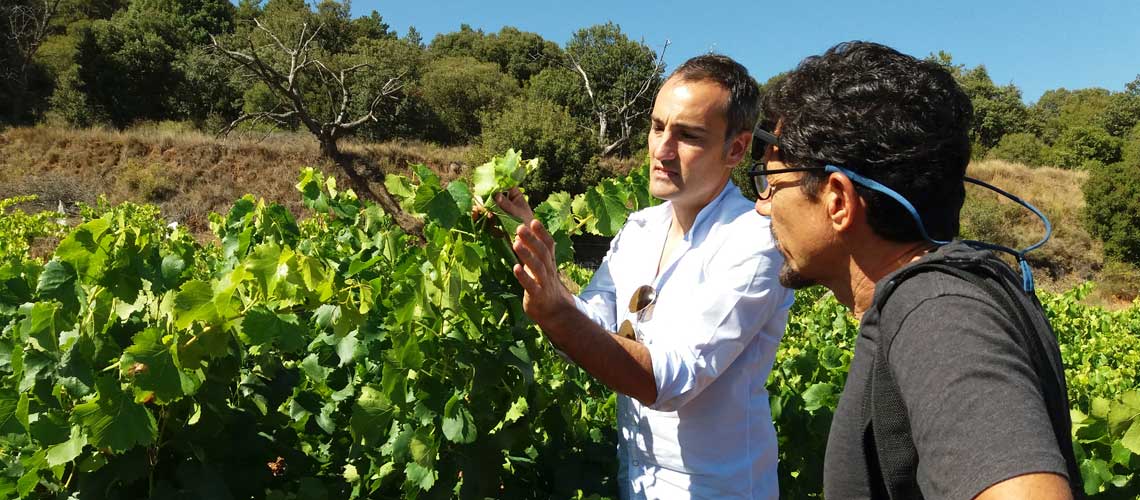
Pago de Larrea: family identity
26 August, 2021
Bodegas Alvia: a winery with a difference
31 August, 2021Javier Arizcuren, architect by trade and wine producer by devotion to his family’s vineyards, embarked a few years ago on his own small winemaking project. He works with Mazuelo (Carignan) and Garnacha, two minority varieties but which have always been farmed in this historic winegrowing village in Rioja Oriental until the explosion of Tempranillo and the shift of the vineyards down from the mountains to the valley. “Some people ask me if it was risky to start a project in Rioja with secondary varieties, but I think the risk lies in the opposite,” says Arizcuren. “Tempranillo is a great variety, but it is not identified with my area; if you are going to tell the rest of the world about something, it cannot be alien to you.”
His first wine, Solo Mazuelo, surprised everyone by harnessing the distinctive character of a variety that has rarely been vinified on its own. Next, he launched Arizcuren Solo Garnacha, a tribute to this extraordinary variety that was reviled in Spain until recently. Arizcuren Barranco del Prado is a single vineyard Garnacha grown at almost 800 metres elevation, as is Valdetrillo. Both wines are ‘versions’ of spectacular centenary vineyards on the same terroir, the Yerga mountain range. “Finally, Garnacha is getting the attention it deserves,” says the winemaker. His latest release, Monte Gatún (one of the region’s landmark peaks), combines Mazuelo, Garnacha and Tempranillo, which Javier also grows at 530 to 600 metres elevation: “My project is about the past, with the historic varieties of Quel, the present, with the now predominant Tempranillo, and the future, revisiting the Rioja tradition of blending the region’s main grape varieties”.

Visiting Arizcuren Vinos is an experience that should not be missed. The winemaker is doing a thorough job of documenting the history of viticulture in Quel, in the Yerga mountains to the east of Rioja, and the characteristics of the soils and the different terroirs. His winery, in Logroño, is the first and only urban winery in the heart of the city. Occupying a 130-metre space designed by one of the best architects in the region, he makes, bottles and sells his wines: “I used to travel 40,000 kilometres a year, from Logroño to the vineyards in Quel. One day we decided in the family that if I wanted to continue with this I had to think about making wine in Logroño,” Arizcuren confides. “Now it’s the grapes that travel 55 kilometres during the harvest in a refrigerated van and everything is much easier.”




